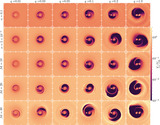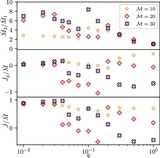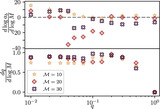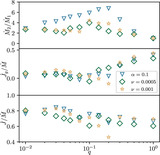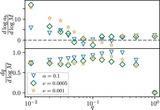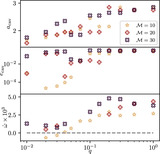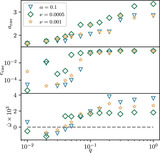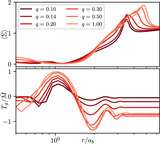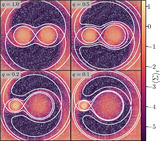Image Details
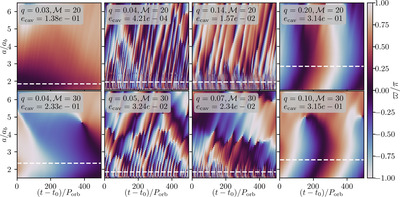
Caption: Figure 10.
Space−time diagrams of the disk longitude of periapsis over the final 500 orbits of each simulation, averaged azimuthally in bins of constant fluid element semimajor axis, with the cavity semimajor axis marked using a dashed white line. Rarely is the entire disk precisely in phase. However, for each Mach number shown here, ﹩{ \mathcal M }=20﹩ in the top row and ﹩{ \mathcal M }=30﹩ in the bottom row, disks around both higher- and lower-mass binaries precess at similar rates throughout. However, disks around binaries at the intermediate mass ratios shown here lack a uniformly precessing eccentric mode, and their eccentricity at small semimajor axes is dominated by orbital timescale variability. P orb is the binary orbital period ﹩2\pi {{\rm{\Omega }}}_{b}^{-1}﹩. We used t 0 = 1500 P orb for simulations of binaries with q ≥ 0.1 and t 0 = 500 P orb for simulations with q < 0.1.
Copyright and Terms & Conditions
© 2024. The Author(s). Published by the American Astronomical Society.


